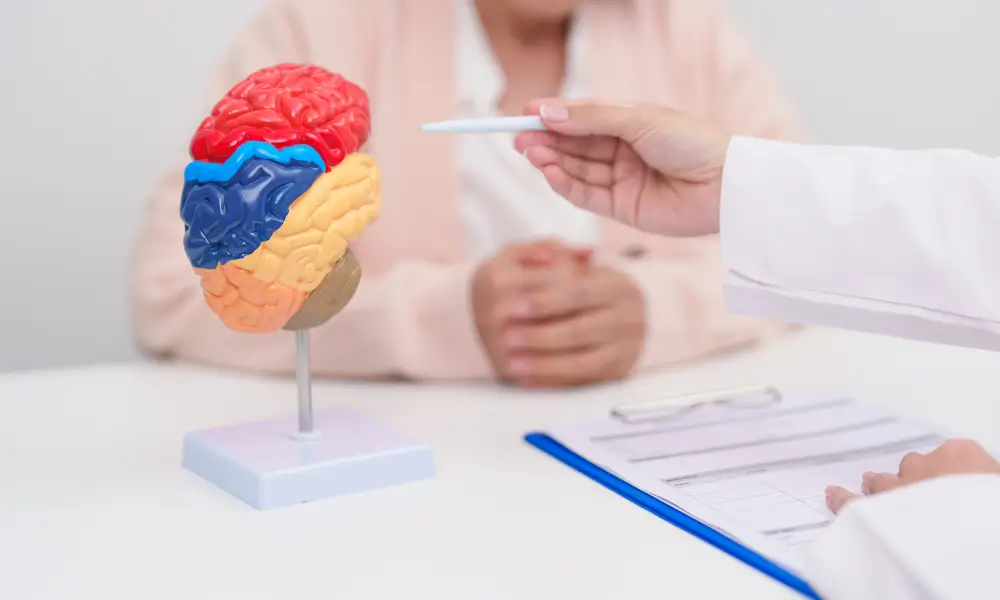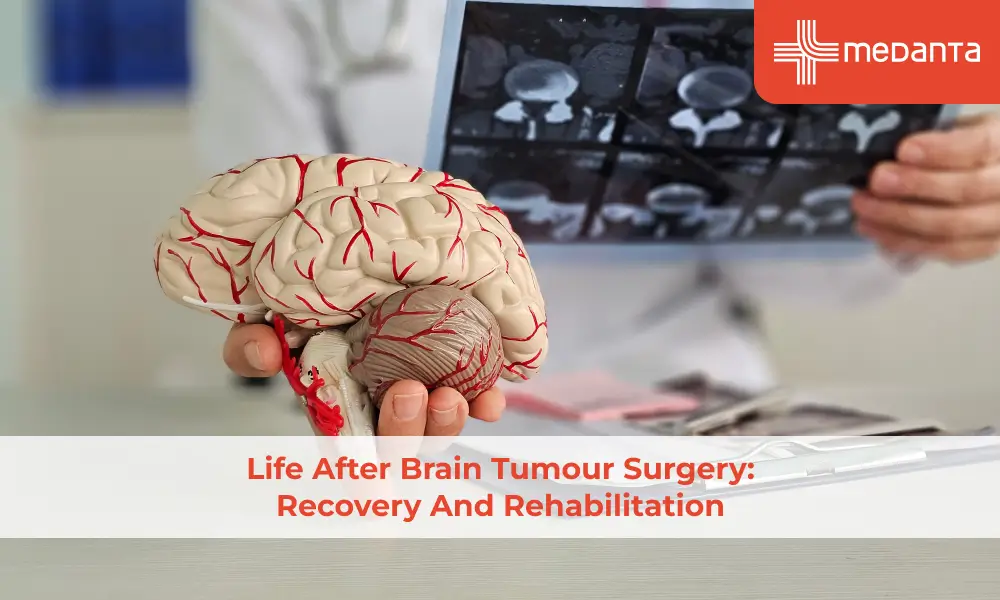Incidentally Detected Brain Aneurysm: Causes, Symptoms, and What to Do Next

TABLE OF CONTENTS
- What Is a Brain Aneurysm?
- Types of Brain Aneurysms
- Risk Factors
- Symptoms to Look Out For in a Brain Aneurysm
- Why an Incidentally Detected Brain Aneurysm Matters
- Diagnosis, Treatment, and Monitoring
- Key Takeaways: What We Can Learn from an Incidentally Detected Brain Aneurysm
- Frequently Asked Questions
Brain aneurysms are more common than most people think. They affect about 5-10% of the population, though most people never realise they have one. Research shows that most brain aneurysms remain intact throughout a person's life.
The news of having a brain aneurysm from a random scan can be scary. The reality is less frightening than it seems. Just 0.25% of unruptured aneurysms - roughly 1 in 200 to 400 - will actually burst. Early detection gives you time to learn about the symptoms and treatment choices. You can then make better decisions about your care.
Life after finding an unexpected aneurysm means understanding what causes it and spotting warning signs. Your doctor will help create a plan to watch or treat the condition. This article gives you clear facts to help you face this unexpected health challenge with confidence instead of fear.
What Is a Brain Aneurysm?
Let us start by understanding this term. Sometimes your doctor may find that you have developed weak spots in the vessels of your brain (bulging outwards) - called a brain aneurysm. Blood pressure constantly flows through these vessels & makes the weakened area balloon out. You can picture it like a thin spot on a balloon that stretches out.
Blood circulation creates constant pressure against this delicate section. The pressure forms a blister-like bump that can grow as big as a small berry. These bulges develop because the vessel wall wears out from continuous blood flow.
Brain aneurysms show up in different forms:
• Saccular or "berry" aneurysms - Most common type that bulges on only one side of the artery wall and has a distinct neck connecting to the parent artery
• Fusiform aneurysms - Less common variety where the artery widens on both sides without a defined neck
These bulges can show up anywhere in the brain. They usually form in major arteries along the skull's base. About 10% to 30% of people with a brain aneurysm have multiple aneurysms.
A ruptured aneurysm leads to bleeding around the brain - doctors call this subarachnoid haemorrhage. This condition is a type of hemorrhagic stroke that needs immediate medical care.
Aneurysms and strokes are different conditions. An aneurysm is a bulge from a weak artery wall. A stroke may occur when your blood vessel ruptures or it may get blocked. All the same, most brain aneurysms stay small and never rupture. People often live long lives without knowing they have one.
Types of Brain Aneurysms
Doctors have grouped brain aneurysms based on their shape and size.
Classification based on shape:
• Saccular (berry) aneurysms - These round bulges look like berries hanging from a vine and are the most common type
• Fusiform aneurysms - These bulges stretch around the entire circumference of an artery
• Mycotic aneurysms - These develop because infections make artery walls weak
The size of an aneurysm tells a crucial story:
• Small - Under 7 mm across
• Medium – 7-12 mm across
• Large - 12-24 mm across
• Giant - > 24 mm across

Risk Factors
Several factors can raise your risk of developing an aneurysm:
• Smoking
• Gender (women have a higher risk than men)
• Being between 30-60 years old
• Family history (risk increases with multiple affected close relatives)
• Using cocaine and amphetamines
• Drinking too much alcohol
• Genetic conditions like Ehlers-Danlos syndrome, polycystic kidney disease, and Marfan syndrome
• Head trauma
The chance of an aneurysm rupturing depends on several key factors:
• Size and irregular shape
• Growth patterns over time
• Position in the brain (especially in the posterior and anterior communicating arteries)
• Ethnic background (people with Japanese and Finnish heritage face higher risks)
Symptoms to Look Out For in a Brain Aneurysm
Brain aneurysms rarely show symptoms in most people, and smaller ones usually stay silent until they grow larger or rupture. Early detection depends on knowing these warning signs.
Silent aneurysms remain hidden until they expand and push against brain tissues or nerves. The patient may notice these signs:
• Pain above and behind one eye
• Numbness or weakness on one side of the face
• Vision changes or double vision
• Dilated pupil
• Headaches
• Seizures
Severe Symptoms if a Brain Aneurysm Ruptures
A burst brain aneurysm creates a medical emergency that requires immediate action. Blood spills into the space around the brain after rupture and causes a condition called subarachnoid haemorrhage (SAH). The situation becomes life-threatening faster.
The key symptom of a ruptured aneurysm appears as an excruciating headache without warning. Patients describe this as "the worst headache of my life". This pain strikes with overwhelming intensity, unlike regular headaches.
A person might experience these symptoms after rupture:
• Stiff neck
• Nausea and vomiting
• Sensitivity to light
• Blurred or double vision
• Seizures (occurring in 25% of cases)
• Confusion or altered consciousness
• Drooping eyelid
• Dilated pupil
• Loss of consciousness
This medical emergency can trigger serious complications including:
• Vasospasm (narrowing of blood vessels)
• Hydrocephalus (fluid buildup in the brain)
• Coma
• Death (occurs in approximately 50% of cases)
Aneurysms might leak slightly before a major rupture. These "sentinel bleeds" trigger warning headaches that appear days or weeks before a catastrophic rupture. The headaches can last several days to two weeks.
Quick recognition of these symptoms can save lives. You should call emergency services right away if you or someone near you has a sudden, very severe headache with any other symptoms listed above. Recovery outcomes improve significantly with quick medical help.
A chance discovery of a brain aneurysm gives us a significant chance for prevention. Modern imaging technology helps doctors find unruptured cerebral aneurysms more often than ever before.
This unexpected finding can save lives. The facts paint a stark picture:
• About 50% of people die within 30 days after a ruptured aneurysm
• Half of those who survive face permanent brain damage
• Most patients don't know they have an aneurysm until it bleeds
Quick detection leads to specialist consultation. If you see your neurosurgeon or interventional neuroradiologist early you may have a better recovery than those who arrive after a rupture.
Medical experts still debate how to handle smaller aneurysms. Most specialists agree that aneurysms seven mm or larger need treatment. This shows why accidental findings matter - they create a window for timely intervention. Regular monitoring becomes essential after discovery.
Diagnosis, Treatment, and Monitoring
When doctors spot a brain aneurysm, the medical team designs a custom plan to diagnose, treat, and monitor the patient. Here's what you can expect:
Stage | Options | Details |
Diagnosis | Creates 2D brain slices; uses dye to observe blood flow and detect aneurysms | |
| MRI & MR Angiography | Produces detailed brain images using a magnetic field and radio waves. MR angiogram is a good screening tool which is absolutely safe with no radiation or contrast/dye. |
| Cerebral Angiogram | Precise imaging where a catheter inserted through the groin/wrist delivers dye to the brain arteries |
| Lumbar Puncture | Spinal tap to check for blood in cerebrospinal fluid if rupture suspected |
Treatment | Observation | Small, unruptured aneurysms may only need monitoring |
| Surgical Clipping | Neurosurgeon places a metal clip at the aneurysm base to stop blood flow |
| Flexible wire coiled inside an aneurysm via a catheter seals it off | |
| Flow Diversion | Stent placed in a blood vessel diverts flow away from an aneurysm |
Monitoring | Newly Diagnosed | First follow-up at 6-12 months |
| Stable Aneurysms | Annual or biennial imaging once stability confirmed |
| Post-Surgery | Follow-up between 5-10 years after treatment |
| Post-Coiling | More frequent monitoring due to higher recurrence rate |
The medical team thinks about several key factors: aneurysm's size, location, shape, your age, overall health, and family history before making decisions.
Key Takeaways: What We Can Learn from an Incidentally Detected Brain Aneurysm
If you find that you have a brain aneurysm during an unrelated scan you can feel overwhelmed. Most aneurysms stay stable throughout life even though this news might sound scary. Your risk of rupture remains relatively low particularly when you maintain proper care and monitoring.
Knowing about aneurysm types, risk factors and warning signs enables you to manage your health effectively. It also helps you set realistic expectations about your path forward when you understand the available treatment options.
Modern medicine provides several ways to manage aneurysms including but not limited to personalised plans for your situation through careful observation, surgical intervention or endovascular procedures.
People often continue their normal lives with some adjustments after finding an incidental aneurysm. Many maintain their regular activities while making positive lifestyle changes including quitting smoking, managing blood pressure & regular medical check-ups.
Your healthcare team is a vital partner in this process. You should ask questions, have a discussion on your concerns and take an active role in your care decisions. Based on the size and location of your aneurysm & your overall health, the doctor can explain the specific risks and benefits of treatment modalities.
Frequently Asked Questions
What is an incidentally detected brain aneurysm?
An incidentally detected brain aneurysm is a weakened, bulging area in the wall of a brain artery that's discovered during medical imaging for an unrelated condition. These aneurysms are found "by accident" when you're having a CT scan, MRI, or other imaging test for headaches, dizziness, or another health concern.
Most people with incidental brain aneurysms have no symptoms and were completely unaware of their presence before the scan.
How common are incidental brain aneurysms?
Incidental brain aneurysms are more common than many people realise, affecting approximately 5-10% of the general population. With improved imaging technology, doctors are discovering them more frequently during routine medical examinations.
The likelihood of having a brain aneurysm increases with age, and they're slightly more common in women than men.
3. What symptoms do incidental brain aneurysms cause?
Most incidentally detected brain aneurysms cause no symptoms at all—that's why they're called "incidental." You likely feel completely normal and have no warning signs.
Occasionally, larger aneurysms may cause headaches, vision changes, or facial pain, but the vast majority remain completely silent until discovered on imaging.
4. What should I do immediately after learning I have a brain aneurysm?
Don't panic. Having an incidental brain aneurysm doesn't mean you're in immediate danger. Schedule an appointment with a neurologist or neurosurgeon and develop a monitoring or treatment plan.
Avoid activities that dramatically increase blood pressure, such as heavy weightlifting or straining, until you've spoken with a specialist.
5. Do all brain aneurysms eventually rupture?
No, most brain aneurysms never rupture.
6. What are my treatment options?
Small, low risk aneurysms are often monitored with MRI or CT scans every six to twelve months to check for growth or changes.
For higher risk aneurysms, treatment options can be endovascular coiling or surgical clipping.






